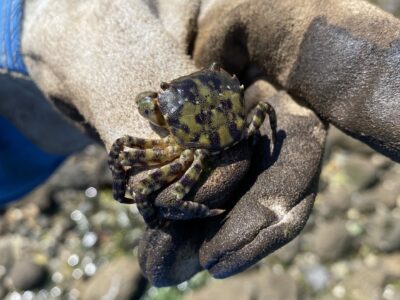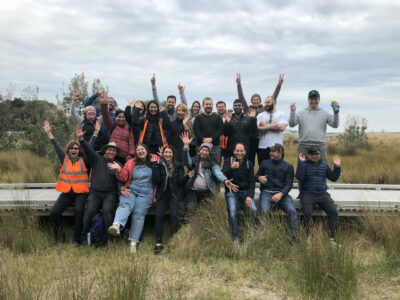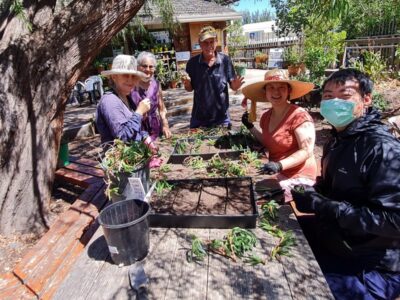Words by Pascale Jacq (EcoCentre Educator) and photos by Tania Spława-Neyman

The EcoCentre’s Wetlands and Wildlife community events were part of the vibrant Nairm Catchment Care Calendar funded by Melbourne Water in 2023. The project included six community events, and seven programs tailored for different schools and for recently arrived migrants studying English. Every experience offered a pathway for personal stewardship of waterways and catchments, as well as opportunities to join groups with ongoing waterway care events including the EcoCentre’s network of community-led environmental groups.
Participants connected to nature and contributed more than 455 volunteer hours caring for iconic (but often unknown) urban waterways and wetlands across southern metro Melbourne including the Glen Iris Wetlands, Yalukit Willam Nature Reserve, Westgate Park and St Kilda West Beach.
At the second of three Glen Iris Wetlands and Wildlife events (mid-June 2023) were thrilled to be surrounded by an array of feathered wildlife on our tour of the woodlands and wetlands adjacent to Gardiners Creek.
In the 1980s when Monash Freeway was built, Melbourne Water cleverly built a series of three filtration ponds to capture and improve water quality from roadside stormwater systems before rainfall drained into Gardiners Creek. Indigenous plantings adjacent to this creek and pond by Stonnington Council and Friends of Gardiners Creek community over 30 years have turned this little strip of land between ovals and freeway into a successful reserve which caters for a great range of bird types.
It provides a great opportunity to learn about birdwatching and perhaps do regular bird surveys as part of citizen science contributing to Birdlife Australia records. (Check out how to use Birdlife’s Bird Data app here.)

By finding a sitspot and waiting and watching, the birds will come to you making them easier to identify and photograph.
A sitspot is a favourite place in nature to sit quietly on a regular basis observing the world around you. This practice is vital for naturalists to observe local fauna, but it also produces such a lovely feeling that some doctors are prescribing it for wellbeing.
Thanks to the generous skill of bird photographer Tania Splawa-Neyman on the tour, we are able to share photos captured during our June session at Glen Iris Wetlands.
Waterbirds like ducks (Pacific Black, Wood ducks, Chestnut teals (pictured below), and Hardheads), Grebes, Coots, Moorhens and Swamphen thrive in the water and on the banks. We were visited by a Common Pied Cormorant which roosted on a log in the water after a dive amongst the rushes. More log perches exposed in the water bodies would allow kingfishers and other fishing birds such as egrets, herons, spoonbills and cormorants to prey and dry their wings.

Small insectivorous birds abound in the dense understory by the ponds and we were surrounded by a flock of male and female Superb Fairywrens (pictured below), Fantails, White-browed Scrubwrens, Brown Thornbills (pictured above) once we stood still and posed no threat. Usually these small birds suffer the harassment of aggressive Noisy Miners in parkland, but find safety here due to mature plantings of scrambly bushes and creepers such as Tangled lignum, Hop Goodenia, Small-leaved Clematis, Swamp Paperbark, and prickly plants like Hakea and Hedge Wattle. These offer refuge from predators, seclusion to nest, and plenty of invertebrates to forage on in safety. Dense understory like this is a clear example of how to attract these little birds to your home.
The local species of Yellow Gums and Flowering gums provide nectar rich blossoms attracting many parrots and honey eaters and colour to our Melbourne winter. We saw (and heard!) Rainbow lorikeets, Musk lorikeets, Red wattlebirds and even an Eastern spinebill in on the nectar feeding action.
Some of the woodland closer to the freeway is more open with less shrubby understory and more native grasses (poas, Microlaena, kangaroo grass, wallaby grasses), lilies (dianella and lomandra) and deep eucalyptus leaf litter. This suits larger predators and scavengers such as Laughing Kookaburra, Pied Currawong, Magpies, Little Raven which were all present during our morning walk. By leaving bare branches of senescing Black wattles and other Eucalypts (as they are well back from the paths and pose no fall risk to passersby), these animals have perches under the tree canopy and can scope the leaf litter for food like lizards and invertebrates.
We learnt that leaving trees and bushes to age and look a little “untidy” offers more variety of habitat. Decaying wood attracts invertebrates and lizards and therefore more diversity in the birdlife, letting some shrubs open with age, rather than keeping them all dense and soft with pruning, can offer more space for colourful native birds to forage and sing.
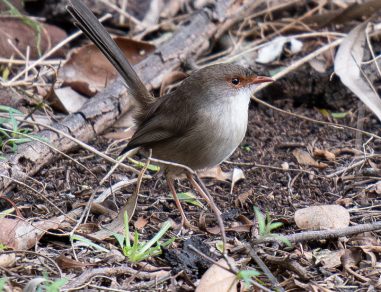
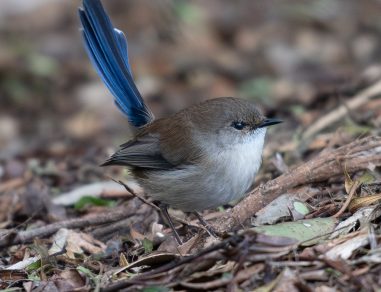
In time, trees may form hollows so that larger parrots, Kookaburra and Wood ducks may nest but it may take several hundred years for the planted native Eucalyptus species here to form such natural hollows (unfortunately none of the original old Eucalyptus predating European settlement remain, which would have been home to many mammals and birds). Thoughtful planning by the Council and Friends of Gardiners Creek has left the trunks of dead Elm trees to decay and form such hollows and perches, and some nesting boxes have been installed with the aim of building more to suit different species.
Thank you to Melbourne Water and the Friends of Gardiners Creek for supporting this winter exploration, discussion and data collection.
Why not come and visit this little pocket of wonder, the Glen Iris Wetlands, join the Friends of Gardiners Creek and their commitment to improving this space, or simply try sitspotting, bird watching, and thinking about how you could improve your own garden to attract a certain kind of feathered friend?
